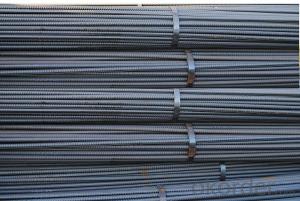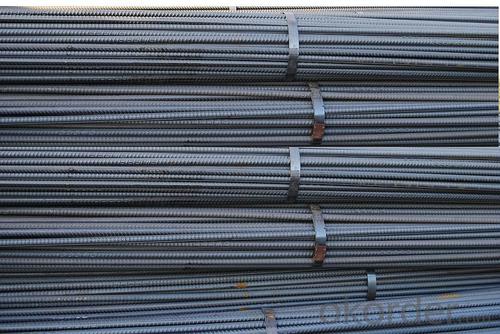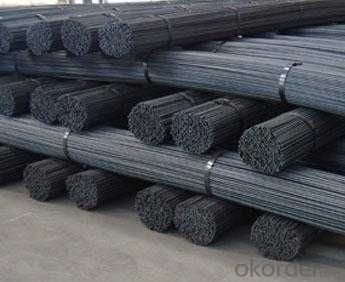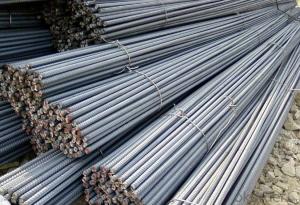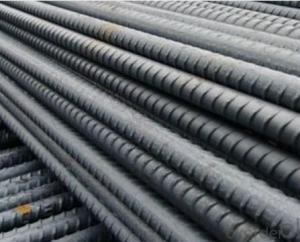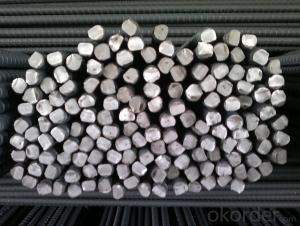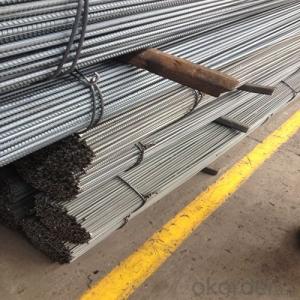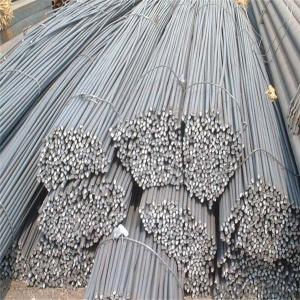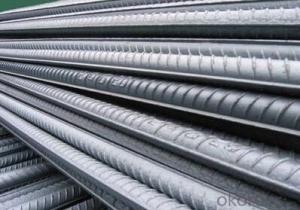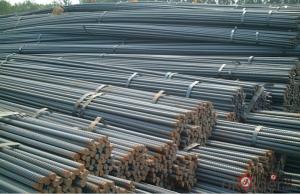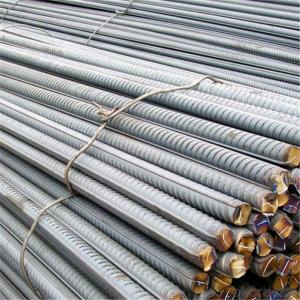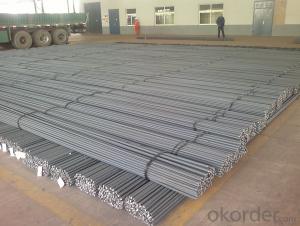Hot rolled deformed steel bar bar for construction
- Loading Port:
- Tianjin
- Payment Terms:
- TT OR LC
- Min Order Qty:
- 10000 m.t.
- Supply Capability:
- 100000 m.t./month
OKorder Service Pledge
OKorder Financial Service
You Might Also Like
Specification
OKorder is offering high quality GR40 deformed steel bar bar for construction at great prices with worldwide shipping. Our supplier is a world-class manufacturer of steel, with our products utilized the world over. OKorder annually supplies products to European, North American and Asian markets. We provide quotations within 24 hours of receiving an inquiry and guarantee competitive prices.
Product Applications:
GR40 deformed steel bar bar for construction for construction for construction are ideal for structural applications and are widely used in the construction of buildings and bridges, and the manufacturing, petrochemical, and transportation industries.
Product Advantages:
OKorder's deformed steel bar are durable, strong, and resist corrosion.
Main Product Features:
· Premium quality
· Prompt delivery & seaworthy packing (30 days after receiving deposit)
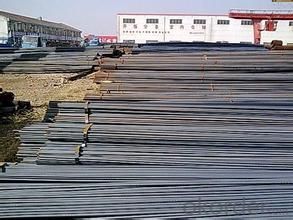
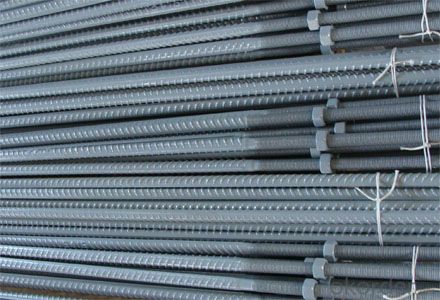
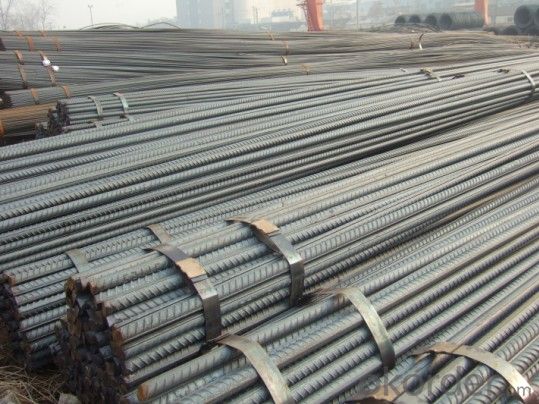
· Corrosion resistance
· Can be recycled and reused
· Mill test certification
· Professional Service
· Competitive pricing
Specifications of Deformed Steel Bar ASTM A615 GR40 GR60 with High Quality:
Standard | GB | HRB335, HRB400, HRB500 | |
UK | G460B, B500A, B500B,B500C | ||
USA | GR40, GR60 | ||
Diameter | 6mm,8mm,10mm,12mm,14mm,16mm,18mm,20mm, 22mm,25mm,28mm,32mm,36mm,40mm,50mm | ||
Length | 6M, 9M,12M or as required | ||
Place of origin | Hebei, China mainland | ||
Application | building,construction,road,bridge etc | ||
Brand name | DRAGON | ||
Theoretical weight and section area of each diameter as below for your information:
Diameter(mm) | Section area (mm²) | Mass(kg/m) |
6 | 28.27 | 0.222 |
8 | 50.27 | 0.395 |
10 | 78.54 | 0.617 |
12 | 113.1 | 0.888 |
14 | 153.9 | 1.21 |
16 | 201.1 | 1.58 |
18 | 254.5 | 2.00 |
20 | 314.2 | 2.47 |
22 | 380.1 | 2.98 |
25 | 490.9 | 3.85 |
28 | 615.8 | 4.83 |
32 | 804.2 | 6.31 |
36 | 1018 | 7.99 |
40 | 1257 | 9.87 |
50 | 1964 | 15.42 |
Usage and Applications of Deformed Steel Bar ASTM A615 GR40 GR60 with High Quality:
Deformed bar is widely used in buildings, bridges, roads and other engineering construction. Big to highways, railways, bridges, culverts, tunnels, public facilities such as flood control, dam, small to housing construction, beam, column, wall and the foundation of the plate, deformed bar is an integral structure material. With the development of world economy and the vigorous development of infrastructure construction, real estate, the demand for deformed bar will be larger and larger..
Deformed bar is widely used in buildings, bridges, roads and other engineering construction. Big to highways, railways, bridges, culverts, tunnels, public facilities such as flood control, dam, small to housing construction, beam, column, wall and the foundation of the plate, deformed bar is an integral structure material. With the development of world economy and the vigorous development of infrastructure construction, real estate, the demand for deformed bar will be larger and larger..
Packaging & Delivery of HRB400 Deformed Steel Bar:
Packaging Detail: products are packed in bundle and then shipped by container or bulk vessel, deformed bar is usually naked strapping delivery, when storing, please pay attention to moisture proof. The performance of rust will produce adverse effect.
Each bundle weight: 2-3MT, or as required
Payment term: TT or L/C
Delivery Detail: within 45 days after received advanced payment or LC.
Label: to be specified by customer, generally, each bundle has 1-2 labels
Trade terms: FOB, CFR, CIF
FAQ:
Q1: Why buy Materials & Equipment from OKorder.com?
A1: All products offered byOKorder.com are carefully selected from China's most reliable manufacturing enterprises. Through its ISO certifications, OKorder.com adheres to the highest standards and a commitment to supply chain safety and customer satisfaction.
Q2: What makes stainless steel stainless?
A2: Stainless steel must contain at least 10.5 % chromium. It is this element that reacts with the oxygen in the air to form a complex chrome-oxide surface layer that is invisible but strong enough to prevent further oxygen from "staining" (rusting) the surface. Higher levels of chromium and the addition of other alloying elements such as nickel and molybdenum enhance this surface layer and improve the corrosion resistance of the stainless material.
- Q: What are the factors that can affect the lifespan of steel rebars in concrete structures?
- Several factors can impact the lifespan of steel rebars in concrete structures. Firstly, the structure's concrete quality and composition are significant. If the concrete is of low quality or contains harmful chemicals, it can corrode the rebars, leading to a shorter lifespan. During construction, it is essential to properly proportion and cure the concrete mixture. Secondly, the rebars' lifespan is greatly affected by the exposure conditions of the concrete structure. Factors like humidity, temperature fluctuations, and the presence of aggressive substances such as chloride ions or carbon dioxide can accelerate corrosion. Structures in coastal or industrial areas are especially vulnerable due to high salt levels in the air or pollutant presence. Thirdly, the design and construction practices employed have a significant impact on rebars' longevity. Adequate cover thickness, which is the distance between the rebar surface and the concrete's outer face, is crucial. Insufficient cover thickness can result in inadequate corrosion protection. Additionally, effective drainage systems should be incorporated into the design to prevent water accumulation around the rebars, as stagnant moisture accelerates corrosion. Furthermore, maintenance practices also affect rebars' lifespan. Regular inspections, cleaning, and repairs help identify and address issues before they worsen. The application of protective coatings or the use of corrosion inhibitors can also extend rebars' lifespan. Lastly, the type and quality of the rebars themselves are important factors. Rebars with higher carbon and alloying elements are generally more resistant to corrosion. The manufacturing process quality and the presence of impurities can also impact rebars' durability. In conclusion, the lifespan of steel rebars in concrete structures can be influenced by several factors, including concrete quality, exposure conditions, design and construction practices, maintenance, and rebars' quality. Proper attention to these factors ensures the longevity and structural integrity of concrete structures.
- Q: Can steel rebars be used in underwater construction?
- Yes, steel rebars can be used in underwater construction. They are commonly used to reinforce concrete structures in underwater environments such as bridges, piers, and offshore platforms. The steel rebars are designed to be corrosion-resistant, ensuring their durability and strength even when submerged in water for extended periods.
- Q: How do steel rebars affect the overall fire safety of concrete structures?
- Steel rebars can have both positive and negative effects on the overall fire safety of concrete structures. On one hand, steel rebars can help enhance the fire resistance of concrete structures. Concrete has a relatively low thermal conductivity, which means it does not conduct heat easily. However, when exposed to fire, concrete can crack and lose its structural integrity. The presence of steel rebars helps to mitigate this issue by providing additional tensile strength to the concrete. The rebars act as reinforcement, helping to prevent the concrete from cracking and collapsing under the intense heat of a fire. On the other hand, steel rebars can also pose some challenges to the fire safety of concrete structures. Steel is a good conductor of heat, which means that it can transfer heat from the fire to other parts of the structure. This can potentially lead to the weakening of the concrete and compromise the overall fire safety. Additionally, steel rebars can expand when exposed to high temperatures, which may cause further cracking and damage to the concrete. To address these challenges, various measures can be taken to improve the fire safety of concrete structures with steel rebars. The use of fire-resistant coatings or fireproofing materials on the rebars can help to minimize the heat transfer from the steel to the surrounding concrete. Fire-resistant insulation or fire barriers can also be installed around the rebars to further protect the concrete from the heat of a fire. Additionally, proper design and construction practices, including the appropriate spacing and size of rebars, can help to ensure that the concrete structure maintains its fire resistance. In conclusion, steel rebars play a crucial role in the fire safety of concrete structures. While they can enhance the fire resistance of concrete, they can also present challenges such as heat transfer and expansion. By implementing appropriate measures and construction practices, the negative effects of steel rebars on fire safety can be minimized, and the overall fire resistance of concrete structures can be improved.
- Q: Can steel rebars be used in composite structures?
- Yes, steel rebars can be used in composite structures. Steel rebars are often used as reinforcement in composite structures such as concrete-filled steel tubes or fiber-reinforced polymer composites. They provide additional strength and stability to the overall structure, making it more durable and resistant to various loads and stresses.
- Q: Can steel rebars be used in bridge expansion joint construction?
- Yes, steel rebars can be used in bridge expansion joint construction. Steel rebars are commonly used as reinforcement in concrete structures, including bridge decks and expansion joints. They provide added strength and stability to handle the dynamic forces and movements experienced by bridges, making them suitable for use in expansion joint construction.
- Q: How are steel rebars transported and stored on construction sites?
- Steel rebars are typically transported to construction sites using trucks or trailers. Once they arrive, rebars are unloaded and stored in an organized manner to ensure easy access and prevent damage. They are commonly stacked horizontally on racks or placed vertically in bundles, secured with wire or straps. Additionally, rebars should be stored on a clean, dry surface to avoid rusting and corrosion.
- Q: Can steel rebars be used in sports stadium construction?
- Yes, steel rebars can be used in sports stadium construction. Steel rebars are commonly used as reinforcement in concrete structures, including sports stadiums, to enhance the strength and durability of the overall construction. The strong and durable nature of steel rebars makes them ideal for withstanding the heavy loads and stresses that sports stadiums often experience.
- Q: How do steel rebars affect the overall durability of a structure?
- The overall durability of a structure is greatly enhanced by the presence of steel rebars. These rebars play a crucial role in reinforcing concrete, contributing to the building's structural integrity and longevity. By distributing and withstanding tensile forces, they increase the load-bearing capacity of the structure. One of the primary advantages of steel rebars is their ability to resist cracking and prevent the propagation of cracks in concrete. Since concrete is weak in tension, introducing rebars helps absorb and distribute tensile stresses, reducing the likelihood of crack formation. This is particularly important in areas prone to seismic activity or other dynamic forces. Furthermore, rebars also exhibit excellent resistance to corrosion, which is a common threat to the durability of structures, especially those in coastal or humid environments. Typically, the steel used in rebars is treated with corrosion-resistant coatings or made from stainless steel, ensuring long-term protection against rust and deterioration. The inclusion of steel rebars in concrete structures also improves their resistance to fire. Steel has a high melting point, and when integrated into concrete, it acts as a heat sink, slowing down the spread of fire and allowing for additional time for evacuation and firefighting efforts. In conclusion, steel rebars greatly contribute to the overall durability of a structure by enhancing its resistance to cracking, corrosion, and fire. Their ability to reinforce concrete and withstand tensile forces ensures the structural stability and longevity of the building, making it more resilient to various environmental and man-made hazards.
- Q: What are the guidelines for repairing or replacing corroded steel rebars in existing structures?
- The severity of corrosion and project-specific requirements determine the guidelines for repairing or replacing corroded steel rebars in existing structures. However, there are some general guidelines that can be followed: 1. Before proceeding with any repairs or replacements, conduct a thorough assessment of the corrosion damage. This may involve visual inspections, non-destructive testing, or laboratory analysis of samples taken from the rebars. 2. Always prioritize safety when working with corroded rebars. Take adequate precautions to ensure the safety of workers and surrounding areas. This may include using personal protective equipment and creating a stable work environment. 3. Determine the extent of corrosion and its impact on the structural integrity of the rebars. This will help determine whether repair or replacement is necessary. 4. Use various repair methods depending on the severity of corrosion. These methods may include removing the corroded portion of the rebar and applying a corrosion inhibitor or protective coating. Electrochemical techniques such as cathodic protection can also be used to prevent further corrosion. 5. If repair is not feasible due to extensive corrosion damage, consider replacing the corroded rebars. The replacement rebars should be of the same or higher grade and properly anchored to maintain the structural integrity of the existing structure. 6. Consider the design requirements of the structure when repairing or replacing corroded rebars. The repaired or replaced rebars should meet the necessary load-bearing capacity and be properly integrated into the existing structure. 7. Implement rigorous quality control measures throughout the repair or replacement process to ensure the effectiveness and durability of the repairs. This may include regular inspections, testing, and monitoring of the repaired or replaced rebars. It is important to note that these guidelines are general recommendations and should be customized to the specific circumstances and requirements of each project. Therefore, it is advisable to consult with a structural engineer or a professional experienced in repairing corroded steel rebars for a more accurate and detailed guideline.
- Q: What is the impact of steel rebars on the overall sustainability of a structure?
- Steel rebars have a significant impact on the overall sustainability of a structure. By reinforcing concrete and improving its strength, steel rebars help to increase the lifespan of the structure, reducing the need for frequent repairs or replacements. This not only enhances the long-term durability of the building but also reduces the consumption of resources and energy required for construction. Additionally, steel rebars can be recycled, making them an environmentally friendly choice. Overall, the use of steel rebars in a structure enhances its sustainability by promoting longevity, reducing waste, and minimizing environmental impact.
Send your message to us
Hot rolled deformed steel bar bar for construction
- Loading Port:
- Tianjin
- Payment Terms:
- TT OR LC
- Min Order Qty:
- 10000 m.t.
- Supply Capability:
- 100000 m.t./month
OKorder Service Pledge
OKorder Financial Service
Similar products
Hot products
Hot Searches
Related keywords
